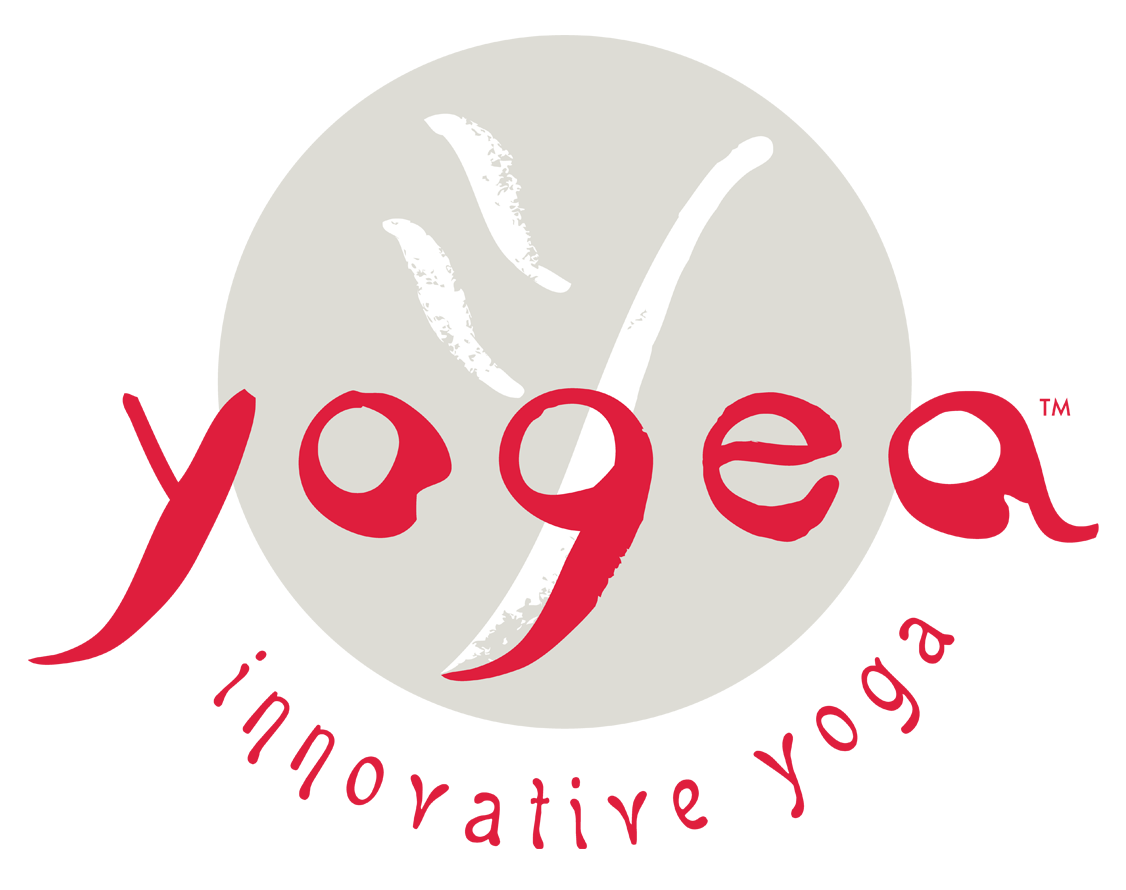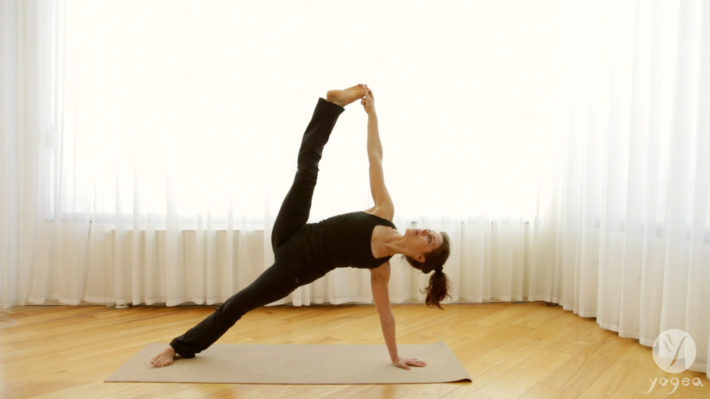This section will focus on splits’ variations. We will view four types of splits: down dog (Urdhva Prasarita Eka Padasana); regular split (Hanumanasana), supine split (Supta Padanghustasana); and plank split (Vashisthasana)
The first pose has different modifications, but is usually performed from down dog. As you raise the leg up and try to square the hips, you can work the hamstrings and calves of the weight bearing leg. It is important to feel the traction between your firmly planted hands and your central girdle that allows you to lift the leg while pulling the ribs in, dropping the shoulders down, away from the ears and firming the outer upper arms in. Try this pose from a down dog alignment gradually lifting the leg up, while maintaining the neutral rotation of the hips. Make sure to do some lunges, Sun Salutes or forward bends in order to make the hamstrings suppler. This pose combines the benefits of inversions, ham-string, calf openers and balancing poses. While being an introspective pose, it is also a centering and basic appetizer that gets you juiced up for the more complicated stuff to come. The final variation of the pose allows for an opening of the hip so you can hike up the leg while splitting it in the air.
The second pose requires very supple hamstrings and open hips, so prior to attempting it, make sure to run a couple of Sun Salutes, lunges cradling into pyramid pose, and forward bends with a straight back that will help you loosen up the longest tendon in the body. Then do a couple of hip openers, like figure four, ankle to knee, bull’s seat and externally rotated standing poses that will allow you to notch deeper in your hip crease and to stretch the gluteus, the psoas and the groin muscles. Because full split requires a mild back bend so you can press evenly through both sit bones as you square the hips, be sure to throw in a camel or a bow pose, before you venture into full split. Avoid forcing yourself into the pose, before you have tried all the transitional stretches to get into it. If it is too challenging for you try an accessible variation of pigeon pose first. In the final split pose be sure to square the hips as much as possible, to even the shoulders out, to soften through the front ribs, while broadening through the collar bones. Watch that your hip joints and shoulders even out into one line. Once in the pose you can try an oppositional twist to square the shoulders even more, or take any bind that feels right. This pose is a hip and hamstring opener and it stimulates the reproductive organs and glands and is a symbol of flexible fortitude.
The third supine pose requires once again an adequate hamstring stretch-based warm up as you are now trying to open both the hip and the hamstring and ultimately the shoulders by going against gravity. It is more soothing on the lower back, but harder on the hamstrings, so be advised to stretch the hamstrings, calves, hips, psoas and gluteus before attempting it. Once you are reclining make sure the bottom leg knee is as straight as possible and that your lower back is not caving in and jamming. As with the previous poses, avoid exerting unnecessary force in the resistance stretching. Employ your breath and keep on elongating your spine, until your leg abducts and opens externally. Once you assume the pose as best you can breathe deeply — it is a good way to wind down after a rigorous routine, and you should be warm enough to challenge your hamstrings and hip flexors by then. On a physical level this pose stretches the hamstrings, calves, hips, shoulders. But on a subtle plane it helps you practice tenacity through acceptance and openness.
The fourth pose is a balancing act and requires a strong core, healthy wrists, ample external rotation of the hips and loose hamstrings. Make sure to practice cat-cow, plank, side plank, lunges, externally rotated standing poses and forward bends. As you assume the pose make sure you press through the outside edge of your rooted foot, stacking the other foot on top while lifting the sides of your hip, the sides of the ribs and pulling out of your wrists, as you make sure that you are properly aligned and your shoulder tracks over the wrist that props the whole body. Once you lift the top leg from side plank and grab onto the toe with the middle and index fingers makes sure not to collapse in the hip and the ribs and keep on rotating your extended leg externally as you let your active arm and shoulder release into the oppositional pull. Come out of it gently as you bend the leg in the air and lower the foot into the ground. You can take a seated twist or a bull’s seat from here. This pose stretches the hamstrings, the deltoids, tones the abs, elongates the side ribs and allows you to balance in a challenging split — a lesson which you can apply directly when dealing with different challenges in life. It cultivates resilience, inner focus and the power of courage and resoluteness.


Leave a Reply